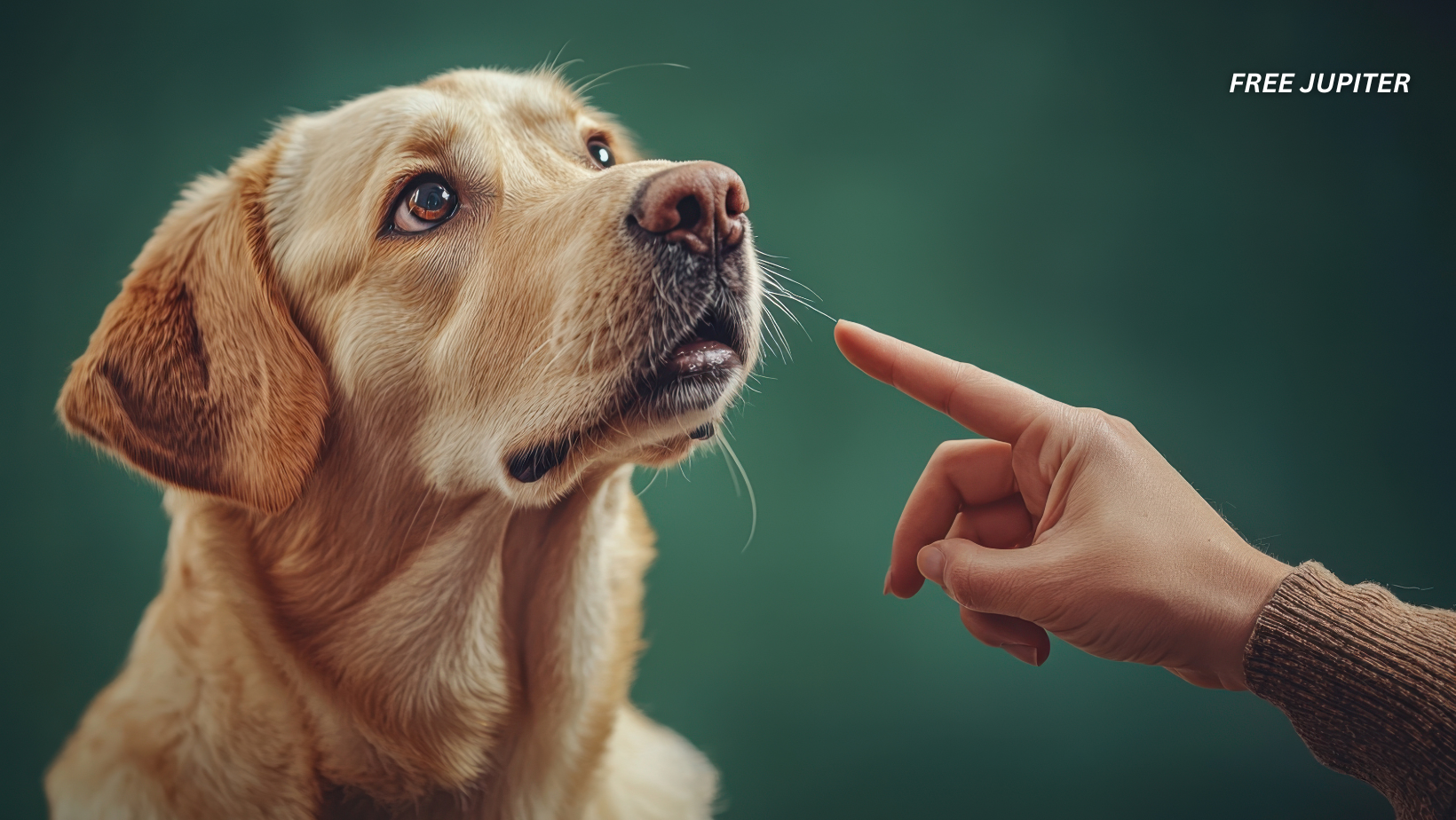Friendly Note: FreeJupiter.com shares general info for curious minds 🌟 Please fact-check all claims—and always check health matters with a professional 💙
Picture this: you’re standing in a park, minding your own business, when a curious dog trots up and gives you a sniff. Your heart melts, your hand rises instinctively—ready to scratch behind the ears—and then, bam! The dog flinches, or worse, growls. You were just trying to be friendly… what went wrong?
As it turns out, when a dog comes over and gives you a sniff, it doesn’t always mean they want affection. In fact, jumping straight to petting can be a classic human mistake. Let’s unpack why.
🧠 Sniffing Isn’t Always an Invitation
To us humans, eye contact and a handshake are standard greetings. For dogs, it’s the nose that does all the talking. Sniffing is their version of reading your résumé, checking your references, and maybe scanning your social media—all in one whiff.
When a dog sniffs you, they’re picking up a wealth of information: where you’ve been, whether you have pets, what you had for lunch, and even what mood you’re in. It’s an investigative process, not an emotional request for cuddles.
This crucial detail is often missed by well-meaning people who think, “Oh, they came to me first, so they must like me!” But from a dog’s perspective, they’re still assessing whether they do feel safe around you.
👃 Meet Hazel: The Hesitant Sniffer
Certified dog trainer Melissa Goodman, founder of Mission Pawsitive, offers a great real-world example. In one of her videos, she demonstrates this dynamic with a dog named Hazel.
Hazel, a sweet but cautious dog, approaches Melissa slowly. Her back legs are stretched behind her while her nose reaches forward. It’s a funny-looking pose—but one packed with meaning. Hazel’s posture gives her a quick getaway option in case she decides, “Nope, too close.”
Melissa doesn’t rush in to touch Hazel. Instead, she calmly observes the dog’s body language. She gently says, “Good girl,” and tosses her a treat.
That move—simple as it is—can be a game-changer.
🐕 Why Rushing to Pet Can Backfire
Melissa explains that many dogs, like Hazel, go into “fight or flight” mode if they feel uncertain or pressured. If you reach out too soon, a dog might recoil, bark, or even snap—not out of aggression, but from fear or confusion.
“If I had tried to pet her,” Goodman explains, “Hazel would’ve jumped back. She wasn’t ready for interaction.” And this isn’t just about Hazel—any dog can react negatively if their boundaries are crossed before they feel secure.
It’s easy to forget that dogs, despite their wagging tails and goofy grins, are emotional creatures who rely heavily on body language and subtle signals to navigate social situations. What we interpret as an open door might be more of a slightly cracked window.
Read more: Dung Beetles Are the First Insects Proven to Navigate Using the Milky Way
🎁 Treats Over Touch: A Better Way to Say “Hi”
So what should you do if a dog approaches you?
Melissa’s go-to move is to carry treats. Not to bribe the dog, but to give them a positive experience. When Hazel sniffed her cautiously, the treat helped in two key ways:
- It rewarded Hazel for being curious and brave.
- It gave Hazel the choice to stay or walk away—without pressure.
This approach puts the ball in the dog’s court. It says, “Hey, I’m cool, no rush. Take your time.” That’s a far cry from the usual human tendency to rush in, cooing and patting like it’s a stuffed animal.
🔍 Learn to Read Dog Body Language
One of the biggest takeaways from Melissa’s demonstration is that how a dog moves tells you a lot more than what they’re doing.
Here are a few subtle signals to look for:
- Leaning forward with stretched legs – Curious, but cautious. Ready to retreat.
- Tail held low or tucked – Nervous or unsure.
- Sudden freeze or stiffness – High alert, possibly stressed.
- Looking away or licking lips – Trying to self-soothe or avoid confrontation.
- Relaxed posture and loose tail wagging – Comfortable and open to interaction.
Dogs speak a whole language through their bodies. Learning that language can help prevent misunderstandings and, more importantly, build trust.
🙅♀️ When to Keep Your Hands to Yourself
So when is it okay to pet a dog?
According to Goodman—and most professional trainers—it’s best to wait until the dog gives a clear signal that they’re comfortable. That might look like:
- Nuzzling your hand.
- Nudging you for attention.
- Leaning into your space with a relaxed posture.
- Sitting calmly and making gentle eye contact.
If you’re ever unsure, try this: extend your hand slowly but don’t move it toward the dog. Let them come to you. If they sniff and stay close, great! If they back away or freeze, they’re not ready—and that’s okay.
🧘♂️ Not Every Dog Is a Social Butterfly
Just like humans, dogs have different personalities. Some are the life of the party, jumping into everyone’s lap. Others are wallflowers, happy to observe from a distance. Neither personality is “better”—just different.
A dog’s comfort with strangers can depend on:
- Their past experiences (positive or traumatic).
- Their breed traits (some breeds are naturally reserved).
- Current mood or health (tired or anxious dogs may want space).
- Training and socialization history.
What matters most is meeting the dog where they’re at—on their terms.
🐾 Takeaways for Safer, Kinder Dog Encounters
Let’s wrap it up with a simple cheat sheet you can keep in mind the next time a dog wanders up to you:
✅ Do:
- Stand still and let the dog sniff.
- Speak calmly and gently.
- Offer a treat if you have one.
- Watch for relaxed body language before petting.
🚫 Don’t:
- Assume sniffing means they want attention.
- Reach over their head without permission.
- Make sudden movements or loud noises.
- Ignore signs of discomfort.
Read more: New Research Suggests Orange Cat Personality May Really Be in Their DNA
❤️ Respect Earns Trust
At the heart of it all, this is about respect—respect for the dog’s space, their comfort, and their unique way of connecting with the world. When we slow down and pay attention, we make room for mutual trust to grow.
And if that means skipping the pats and settling for a sniff and a tail wag? That’s still a win in a dog’s book.
So next time a dog walks up to sniff your jeans, pause. Let them lead the interaction. You just might make a furry friend for life—no hands required.










